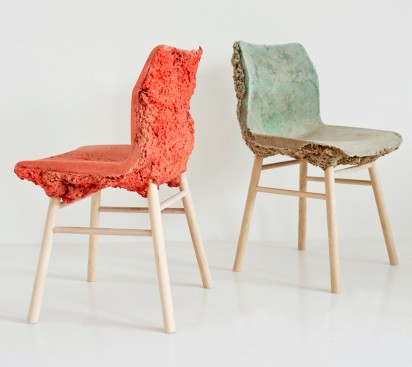
It wasn’t until my husband and I started renovating our home that I realized just how much waste is involved in constructing and producing new materials. With every DIY project, the leftover materials and excess grew in piles and piles until the waste was nearly unmanageable. (And this was just for a single home.) Imagine how much waste an entire factory might be creating and you’ll understand why London-based artists Marjan van Aubel and James Shaw collaborated to create a [strikingly beautiful] solution to our nation’s timber wastage crisis.
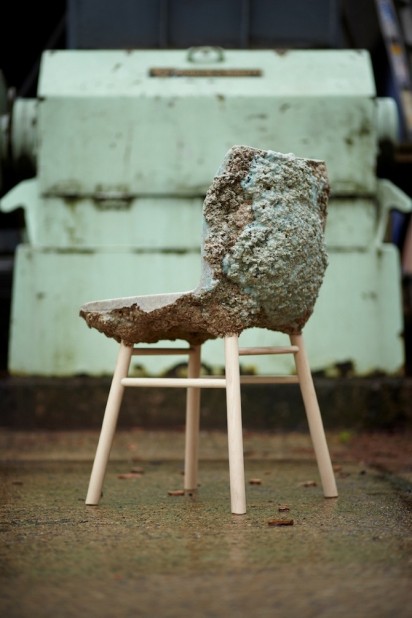
The idea began when the American Hardwood Export Council announced a new cooperation to utilize environmental life cycle assessment (LCA) in an effort to measure its total environmental impact across timber production and usage. Passionate about waste re-purposing, Shaw and van Aubel (who met studying design at the Royal College of Art) set out to become two of the first few designers to create a piece subjected to LCA. Van Aubel writes, “For me, design is about finding new ways of doing things – exploring and combining existing or finding new techniques to improve the way things are now.”
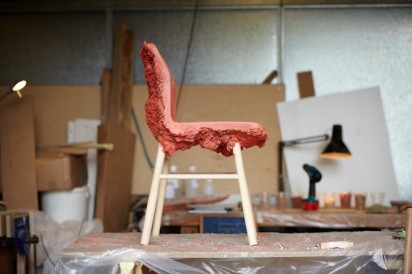
And with up to 50-80% of hardwood wasted by traditional manufacturing methods (the majority of shavings left to be burned or scattered among landfills), it’s an improvement that is increasingly necessary. So what did the duo come up with? The Well Proven Chair, a statement seat that combines the best of science, technology and design methods to solve a worldwide environmental dilemma.
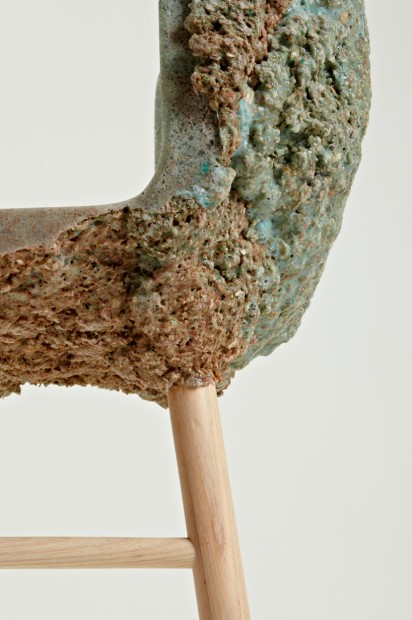
The idea seems simple enough: combine the waste shavings with bio-resin, creating a chemical reaction that expands the products into a foamed structure. The mixture, which is porridge-like in texture, is applied to the underside of a chair shell by hand, not unlike the painstaking formation of your childhood sand castles. Once applied, the mixture foams explosively to create its own exuberant form and is anchored by the simple turned legs of American ash – a perfect blend of technological advances with a foundation in simple, handmade techniques.

The result is a statement chair that is both lightweight and malleable, while the shavings’ hardwood fibers ensure durability – a smart formula for a new era in seating. And by adding colored dyes to the material, each piece is as form-driven as it is functional.
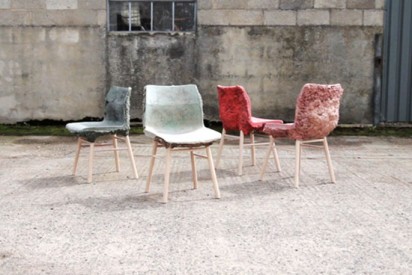
Yet The Well Proven Chair is a long way from arriving around your family’s dinner table. “At this moment we are looking for faster production ways to make the chairs,” van Aubel writes. “It is still very handmade.”

Still, the idea exudes innovation and offers a solution to a well-hidden manufacturing secret. At the same time, it offers a bright future for the advancement of LCA. Writes sustainable business professor Asheen Phansey in a recent Huffington Post article, “Just as quality assurance is no longer a differentiator but a must-have, environmental lifecycle assessment will become the de facto standard — if not the regulated standard — for product design. A decade from now, designers won’t consider these sustainable product design examples innovative — they’ll consider them obvious, and wonder why we ever designed unsustainably.”
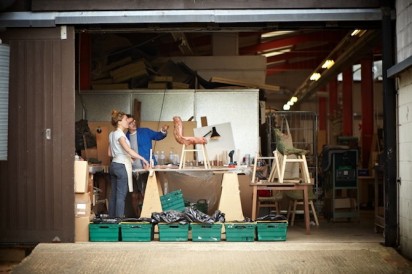
Until then, van Aubel and Shaw can be found in their studio, sculpting chairs from bio-resin and wood shavings – slowly molding a brighter future for us all.
Image Credits: James Shaw via This is Paper
Related: The Chair That Might Solve The Ocean’s Biggest Pollution Crisis


Love the idea and sentiment behind it but aesthetically I’m not so sure!
@Jane – It’s definitely not for everyone, is it?
Looks like the dEnIm Insulation we just installed in our basement. Maybe Mo can use it as decor too! Putting in new basement ceiling (car siding). He and ken could go into business if they lived near one another!!
@Beth – Ha, that is SO TRUE! Good luck! I can’t wait to see it!
I don’t know if I’d be able to sit in that chair, but it looks so cool I’d give it a shot! Still, it’d be a great project for true fans of interior design in NJ to tackle
some times waste is realy not waste if we think other beyond our own imaginations. i loooooooooove that idea.
he he, just wanted to say, I liked this post. It was inspiring. Keep on posting!
its amazingggg